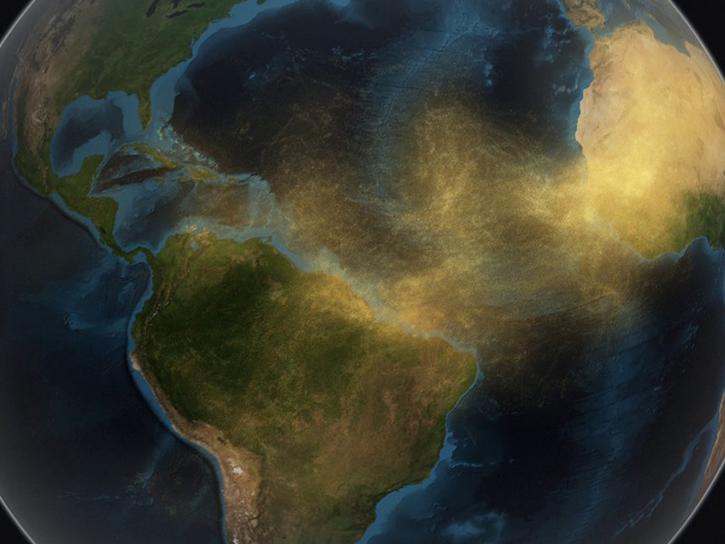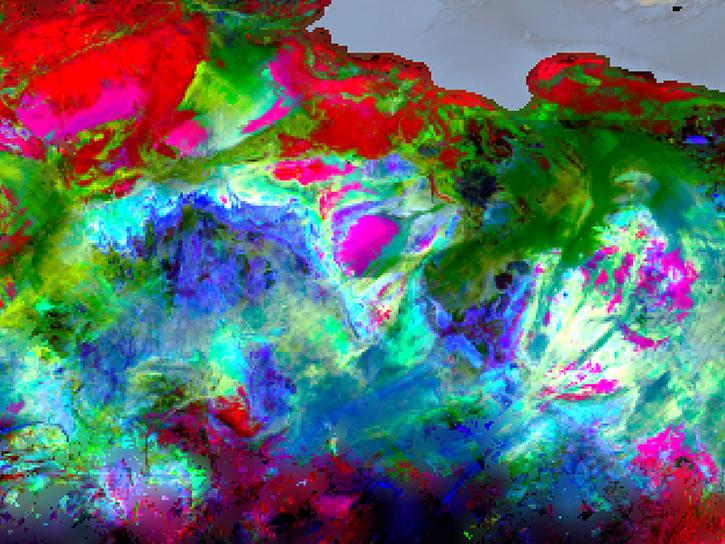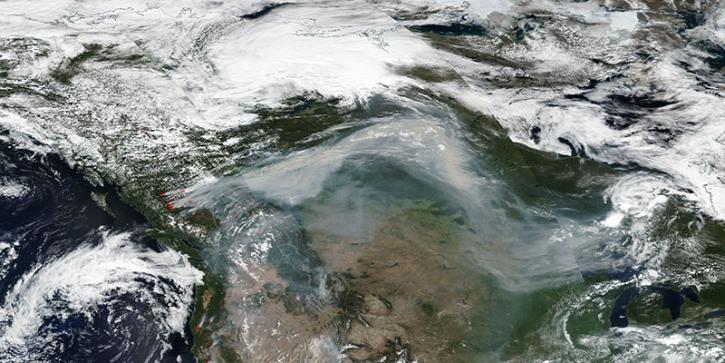Access a range of data for studying and tracking dust, ash, and smoke in the atmosphere.
Dust from deserts, ash from volcanoes, smoke from wildfires, and airborne particles from other related sources can greatly influence the health of our planet and the people living on it. Desert dust is believed to benefit the ecology of the Amazon rainforest and oceans, but can also damage crops. Thin layers of ash can aid agriculture as well, but it is largely considered a hazard for breathing and health, aviation, natural habits, human infrastructure, and more. Likewise, wildfire smoke endangers cardiovascular health, reduces visibility, and can contain toxins. Individually and collectively, dust, ash, and smoke can all affect weather and climate by warming or cooling Earth.
NASA has many powerful platforms analyzing airborne particles and producing datasets measuring dust, ash, and smoke in the atmosphere. Learn more about near real-time ash plume, dust storm, and smoke plume data provided by NASA's Land, Atmosphere Near real-time Capability for Earth observation (LANCE).
Learn How to Use Dust/Ash/Smoke Data




Join Our Community of NASA Data Users
While NASA data are openly available without restriction, an Earthdata Login is required to download data and to use some tools with full functionality.
Learn About the Benefits of Earthdata LoginFrequently Asked Questions
Earthdata Forum
Our online forum provides a space for users to browse thousands of FAQs about research needs, data, and data applications. You can also submit new questions for our experts to answer.
Submit Questions to Earthdata Forumand View Expert Responses